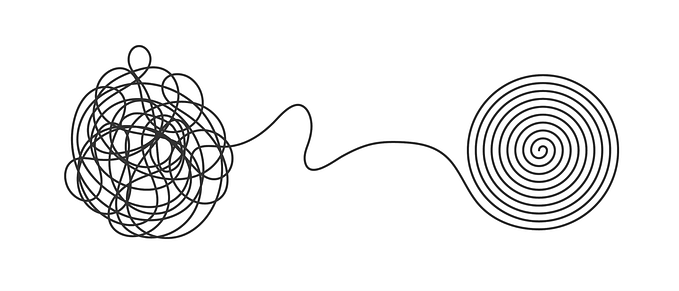The beauty of content architecture
When working on digital experiences, designers and writers interact with content architecture all the time, and may not even realize it.
Content architecture is a view of language not just as strings of simple sentences, noun + verb + direct object. Instead we define how content elements come together in contexts and layers.

What about content architecture in your work? Your user experience might be embarrassing in places. Your content strategy kicked in the shins. Timing and delivery interrupted. Without architecture to organize content, it can feel like a mess too big to take it on.
While our jobs creating digital products depend on content architecture, I find few who understand it even in engineering. Well, few who want to anyway. You can’t call it much of a shiny thing. I get it.
True, there’s absolutely no glamour.
The beauty of content architecture is unseen.

Understanding content as abstraction
Most people are familiar with the concept of abstraction in the context of art. Here’s a sequence where Roy Lichtenstein renders the visual content increasingly abstract. Loving the title.
Dictionary.com says, “abstraction is considering something as a general quality or characteristic, apart from concrete realities, specific objects or actual instances.”
In content architecture, we simplify and define the content’s purpose separately from unique representations. In Lichtenstein’s triptych, the cow loses the detail of its face and markings. The cow is distilled to its essence. Similarly, in architecture, content loses the detail of specific language, highly temporal messages or tight flows of hand-crafted narrative. This level of abstraction gives your content the independence needed to be flexible in a world of many screens, systems and platforms where it’s displayed.
Lichtenstein said of his art, “Nothing is more abstract than anything else to me. The first one is abstract; they’re all abstract.” To him, the difference between the three cows is merely visual style.
The painting of a cow ≠ a cow. In content, you might say that the most concrete single word is still an abstraction of meaning for something existing or implied in the world. While the language in digital experiences is abstracted in content architecture, digital experiences also give it expression. It’s part of a vast web of meaning beyond the screen, though part of and dependent on it.
Abstraction is expansive, creating potential
Here’s an example of abstraction using content:
- Start with a word
- A word is part of a phrase
- A phrase is part of a sentence
- The sentence can be part of a title or a paragraph
- These can be part of a content type, like an article, FAQ or error message…
Keep going:
- A content type can be part of a channel like apps, web, chatbot or email
- The channel is managed by technologies and people…
Or take another direction:
- The sentence has a topic
- The topic explains the product
- The product is part of a body of knowledge
- Knowledge is used by different user segments in different locations…
By doing this, you find more elements, multiple relationships between things, and new, varied combinations to create experiences from. For example, a paragraph may be part of a topic that’s expressed in your Help Center, marketing landing, or product page. The first sentence of it pulled out into a chatbot reply. And, the topic relates to other topics you may recommend. Architecture makes publishing possible by giving order to content as a body unto itself rather than using screens to order it in limiting ways.
You design screens, but how much do you consider the beauty behind them?
We need to explicitly define this structure for our content and capture it in standard ways across models, schemas, metadata, taxonomy, terminology, etc. It helps us deliver a range of useful, relevant, meaningful content experiences. Without doing these things, we miss the pace of change, scale, reuse, targeting, reliable content analytics, machine learning, and more.
Content architecture is what organizes your content for quality, innovation, delight—and beauty.
Jack Cowart, host. “Conversations with Artists: Roy Lichtenstein.” National Gallery of Art, January 27, 1985. https://www.nga.gov/features/the-serial-impulse/roy-lichtenstein.html.






